In early 2004, Boeing announced provisional plans for the next generation of the 747 called the 747 Advanced. It was a stretched, larger capacity version of the 747, proposed as an alternative to the double-decker A3XX (which became the A380) being developed by Airbus, and incorporated new developments in technology and aerodynamics derived from the Boeing 787 Dreamliner programme. The 747 Advanced was officially launched as the 747-8 in November 2005, with two variants: the passenger 747-8I (Intercontinental) and the 747-8F freighter. In addition to the stretched fuselage, the aircraft was to feature a redesigned wing, and to use a single engine type and cockpit technology, including some fly-by-wire flight controls, adopted from the Boeing 787.
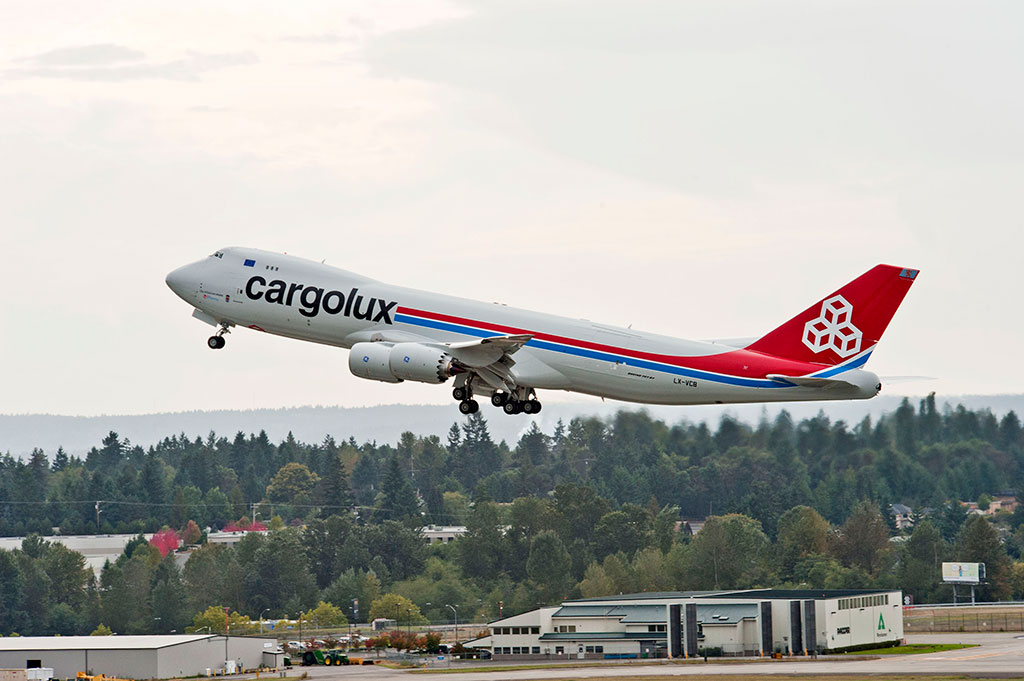
Delivery of the first 747-8F to Cargolux in October 2011 (Photo: Boeing)
The first orders for the new 747-8 were received from Cargolux and Nippon Cargo Airlines in November 2005, hence development of the freighter variant was prioritised and production began in August 2008. However, progress was slow due to design modifications, a shortage of engineering resources within Boeing and industrial disputes. The maiden flight of the 747-8F (N747EX; c/n 35808) eventually took place on 8 February 2010 and, by June, three -8F aircraft were involved in the flight-test programme. The first -8F (LX-VCB; c/n 35806) was delivered to Cargolux in October 2011and, following type certification, entered into service in December 2011.
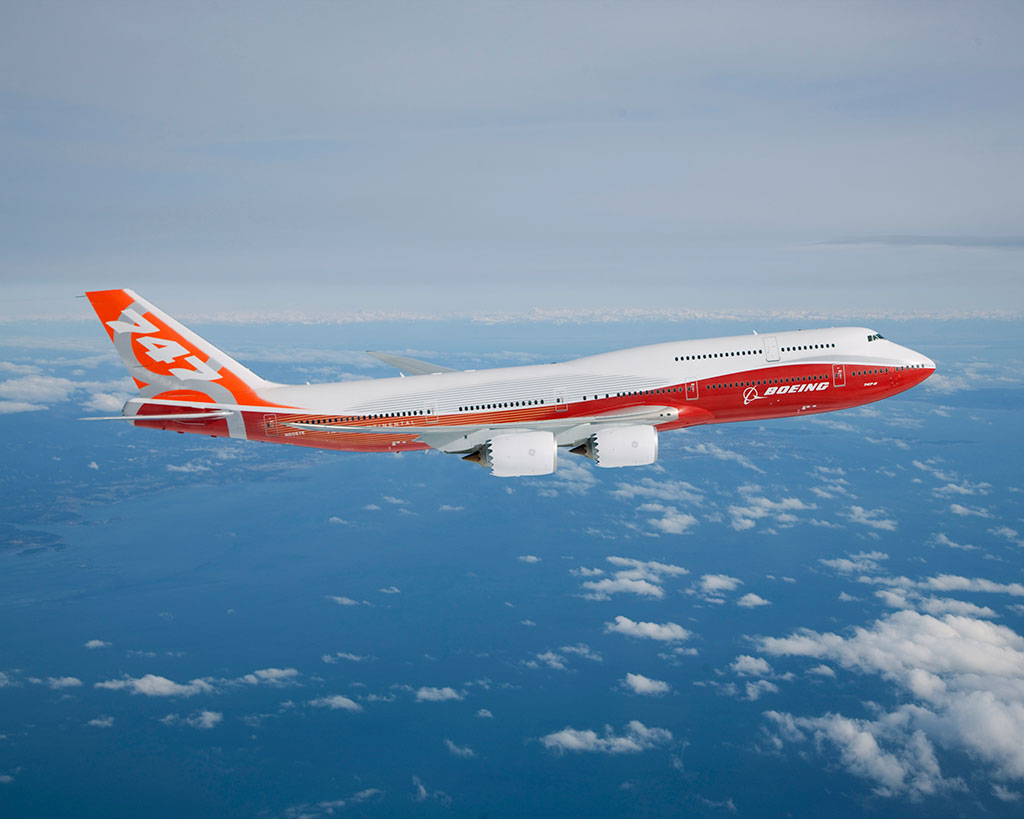
The first Boeing 747-8 Intercontinental on its first flight in March 2011 (Photo: Boeing)
Orders for the 747-8I passenger variant were slow to materialise; only Lufthansa and Korean Air had placed orders by December 2009. The first -8I made its maiden flight in March 2011, and two others had joined the flight-test programme by December 2011. Lufthansa was the launch customer for the Intercontinental type and received its first aircraft (D-ABYA; c/n 37827) on 5 May 2012. It was introduced into service on the Frankfurt to Washington route at the beginning of June 2012.
Boeing 747-8 Described
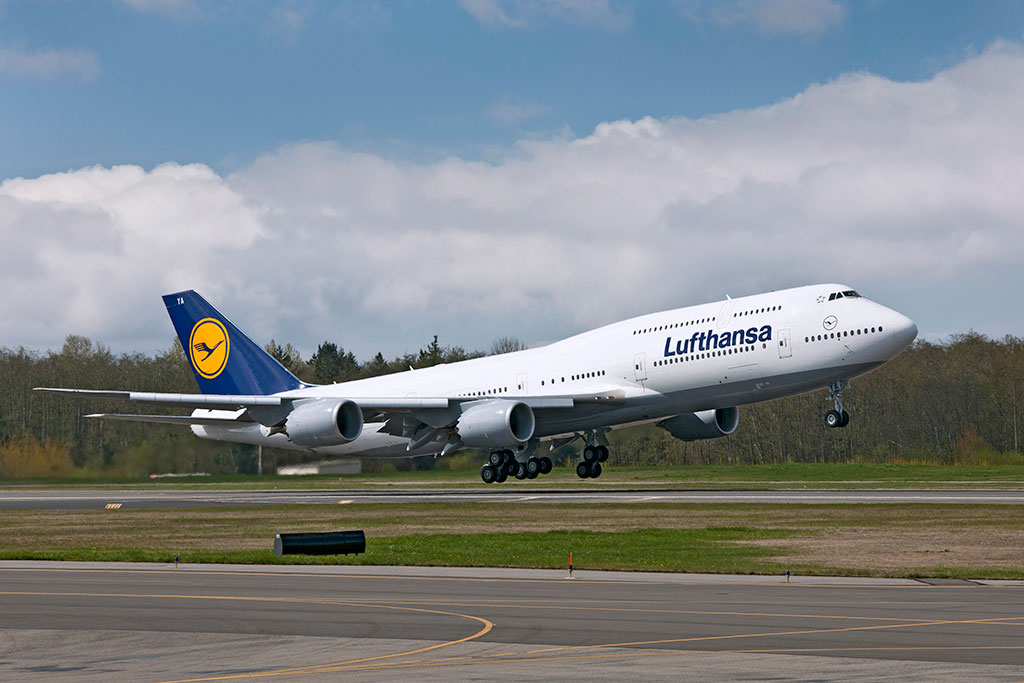
The first Boeing 747-8I, D-ABYA, to be delivered to Lufthansa in May 2012 (Photo: Boeing)
The 747-8 features a fuselage stretch of 18ft 4in (5.6m) compared with the 747-400, giving a total fuselage length of 250ft 2in (76.3m). This is achieved by the insertion of two fuselage plugs: one forward of the wing (13ft 4in / 4.06m in length) and the other aft of the wing (5ft / 1.52m in length). The 747-8I has an extended 747-400 type upper fuselage lobe, whereas the upper deck of the 747-8F is shorter, with a 747-100/200 style upper fuselage lobe.
The redesigned wing of the 747-8 is longer (wingspan: 224ft 5in / 68.4m), wider, thicker and deeper than that of the 747-400, resulting in an increase in fuel capacity. It features single-slotted (rather than double-slotted) outboard flaps and double-slotted (rather than triple-slotted) inboard flaps to improve low-speed performance and contribute to noise reduction. Raked wingtips are preferred to winglets, improving airflow around the wing and reducing wingtip vortices, wake turbulence and drag, which results in improved fuel efficiency. The trailing edge of the wing and the wingtips are constructed from carbon-fibre composites. A fly-by-wire system is used to control the spoilers and outboard ailerons, contributing to weight savings. This is the first time fly-by-wire control technology has been used in a variant of the 747.
The 747-8 is powered by four General Electric GEnx-2B67 high-bypass turbofan engines – a smaller diameter variant of the engine used on the Boeing 787. The engines feature a saw-tooth-shaped trailing edge on the engine nacelle exhaust and chevron-shaped trailing edges on the turbine casing, creating up to 30% reduction in engine noise.
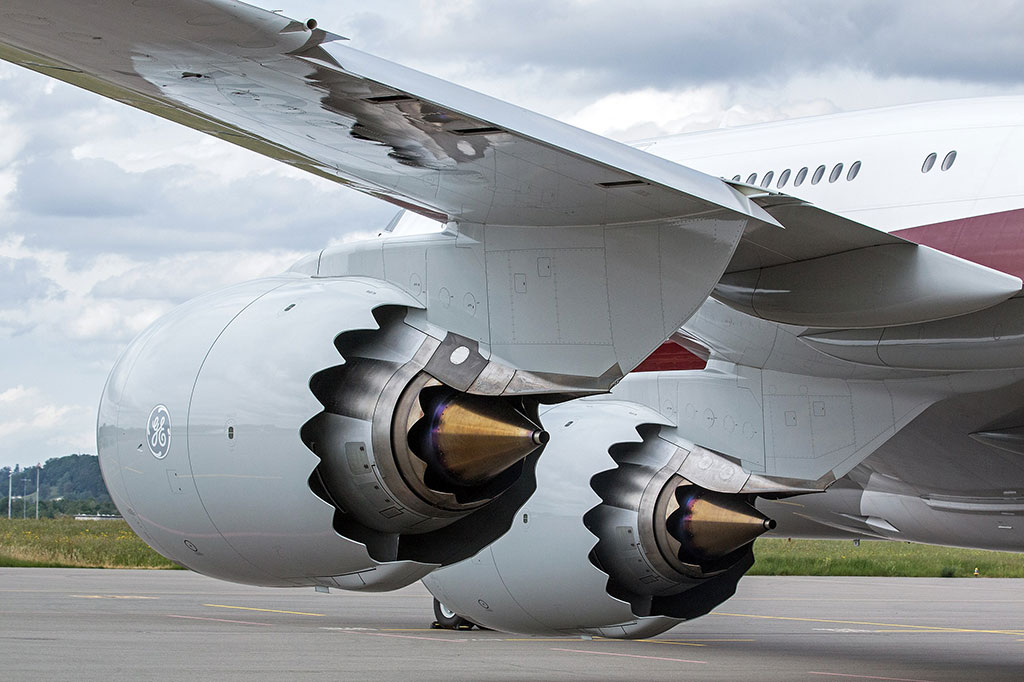
The saw-tooth-shaped trailing edge on the engine nacelle exhaust and chevron-shaped trailing edge on the turbine casing of the 747-8’s General Electric GEnx-2B67 engine (Photo: Lukas von Daeniken, distributed under a CC BY-SA 2.0 Licence)
The upgraded flight deck of the 747-8 includes multifunction displays, a vertical situation display, an airport moving map display, electronic flight bag provision, an electronic checklist system and an updated electronic flight management system. Many of the improvements include technology from the Boeing 787, although operational commonality with the Boeing 747-400 is retained.
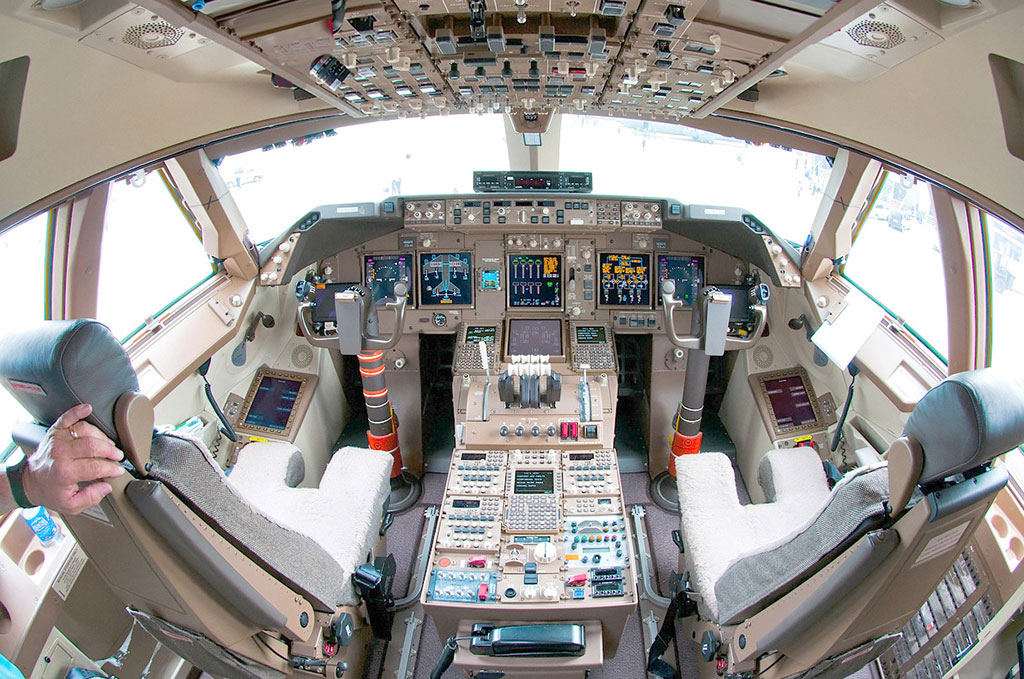
The flight deck of the Boeing 747-8 (Photo: Alex Beltyukov, distributed under a CC BY-SA 3.0 Licence)
The 747-8I can accommodate up to 467 passengers in a three class seating configuration, operating over a range of 7,730nm (14,430km). This is an increase of 51 passengers over the 747-400; in addition it has more than a 25% increase in cargo volume. It is claimed by Boeing that the various aerodynamic refinements, including the revised wing, and the new engine type mean that the 747-8I is16% more fuel efficient and has13% lower seat-mile costs compared to the 747-400.
The cabin interior of the 747-8I has inherited a number of features from the 787 including a curved upswept architecture, which creates an enhanced feeling of passenger space and comfort, and an LED ‘mood’ lighting system, as well as larger windows similar to those used on the Boeing 777. The aircraft also has a more spacious main passenger entrance, together with a curved stairway to the upper deck.
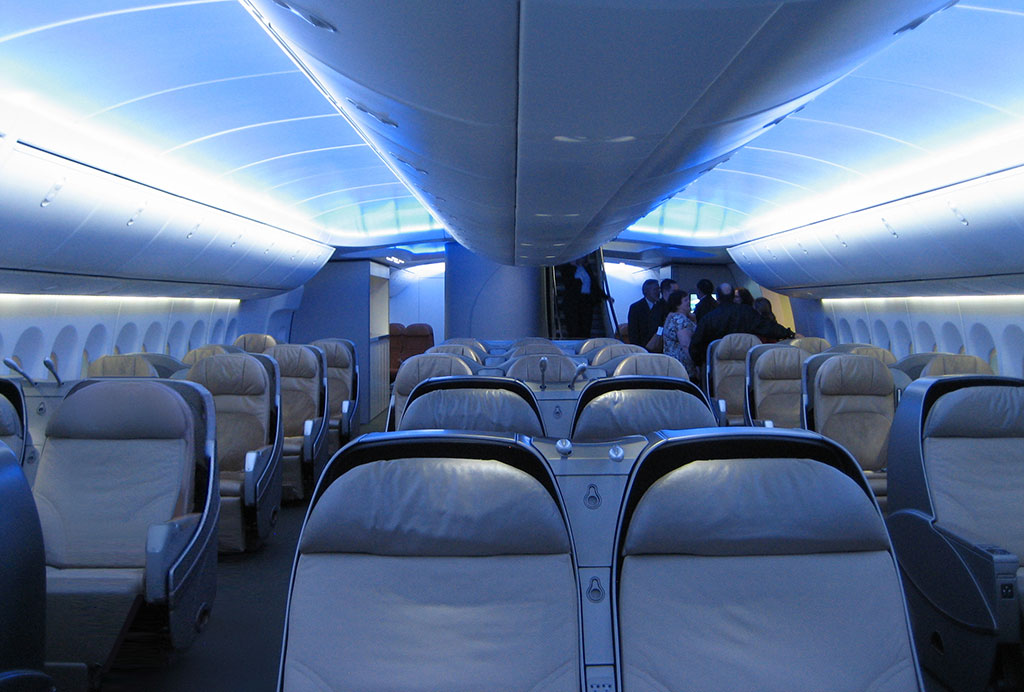
The interior of the main deck (Business Class) of the 747-8I (Photo: Chung Webster, distributed under a CC BY-SA 2.0 Licence)
The 747-8F has a total cargo capacity of 857.7 cubic metres, a maximum structural payload capability of 139.5T (307,600lb) and a range of 4,325nm. It is claimed that the freighter has a 16% lower ton/mile operating cost than the 747-400F and a slightly greater range.
The only operators of the 747-8I are Lufthansa, Korean Air and Air China. Only thirty-five aircraft entered into service with these airlines. There was a greater demand for the -8F variant, although not in large numbers. The current operators include Atlas Air, Cargolux, UPS, Silk Way, Cathay Pacific, Korean Air, Nippon Cargo and Polar Air Cargo. There are a small number of VIP-customised 747-8 aircraft in operation with the Qatar Amiri Flight and the Governments of Brunei, Egypt, Kuwait, South Korea and Morocco.
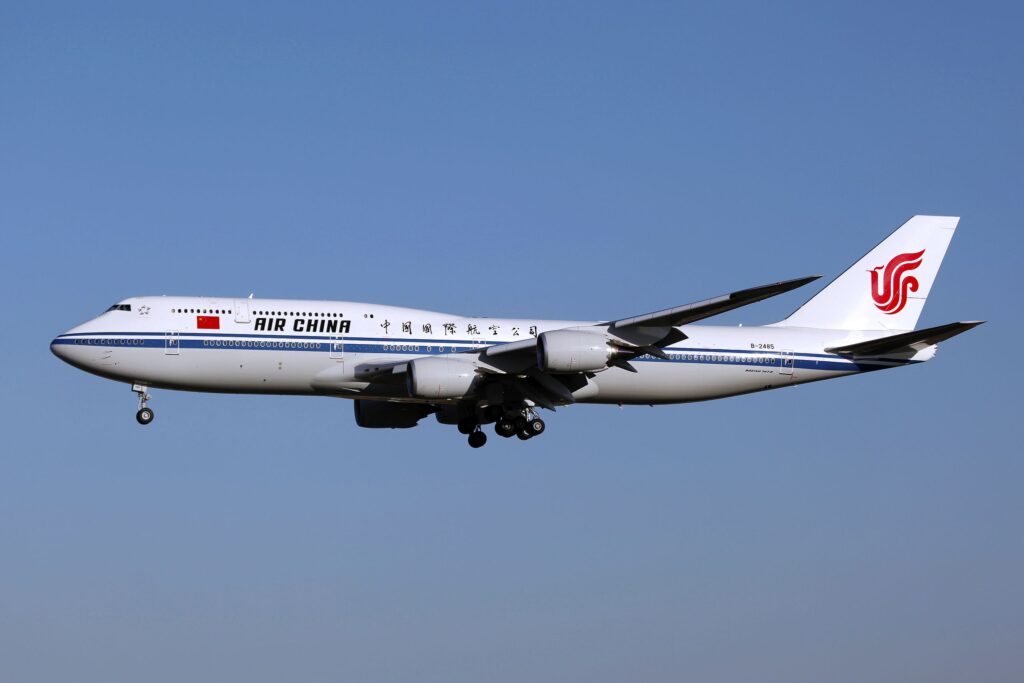
Air China 747-8I (B-2485) on approach to Beijing Capital International Airport (Photo: eangel, distributed under a CC BY-SA 2.0 Licence)
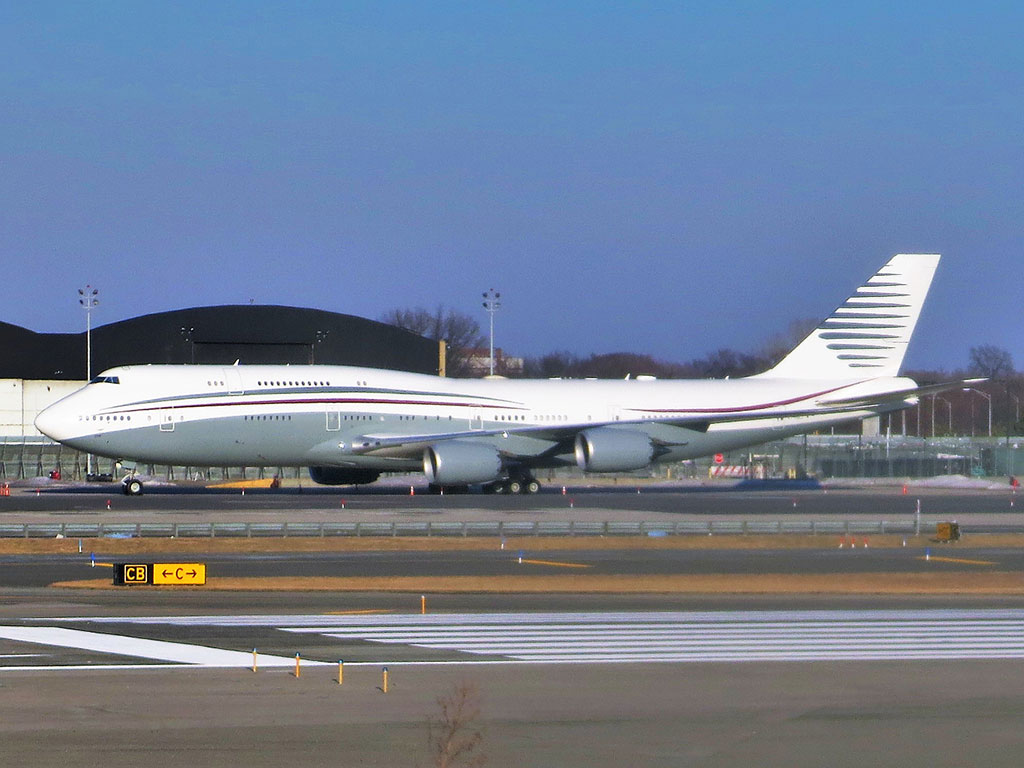
A Qatar Amiri Flight 747-8I (A7-HBJ) at John F. Kennedy Airport (Photo: Adam Moreira, distributed under a CC BY-SA 4.0 Licence)
The United States Air Force selected the 747-8 to replace the aging VC-25A (a heavily modified 747-200B) as the US Presidential transport aircraft, Air Force One. The USAF purchased two undelivered 747-8Is (originally due for delivery to Transaero) from Boeing in August 2017. Modification of these aircraft to VC-25Bs began in March 2020 and the aircraft are scheduled for completion and delivery in December 2024.
Declining orders for the 747-8, followed by the impact of the Covid-19 pandemic on the aviation industry and the increasing preference for twin-engined aircraft, led Boeing to make the decision in July 2020 to stop the production of all 747 series aircraft, with the final 747-8F rolling off the production line in December 2022.




